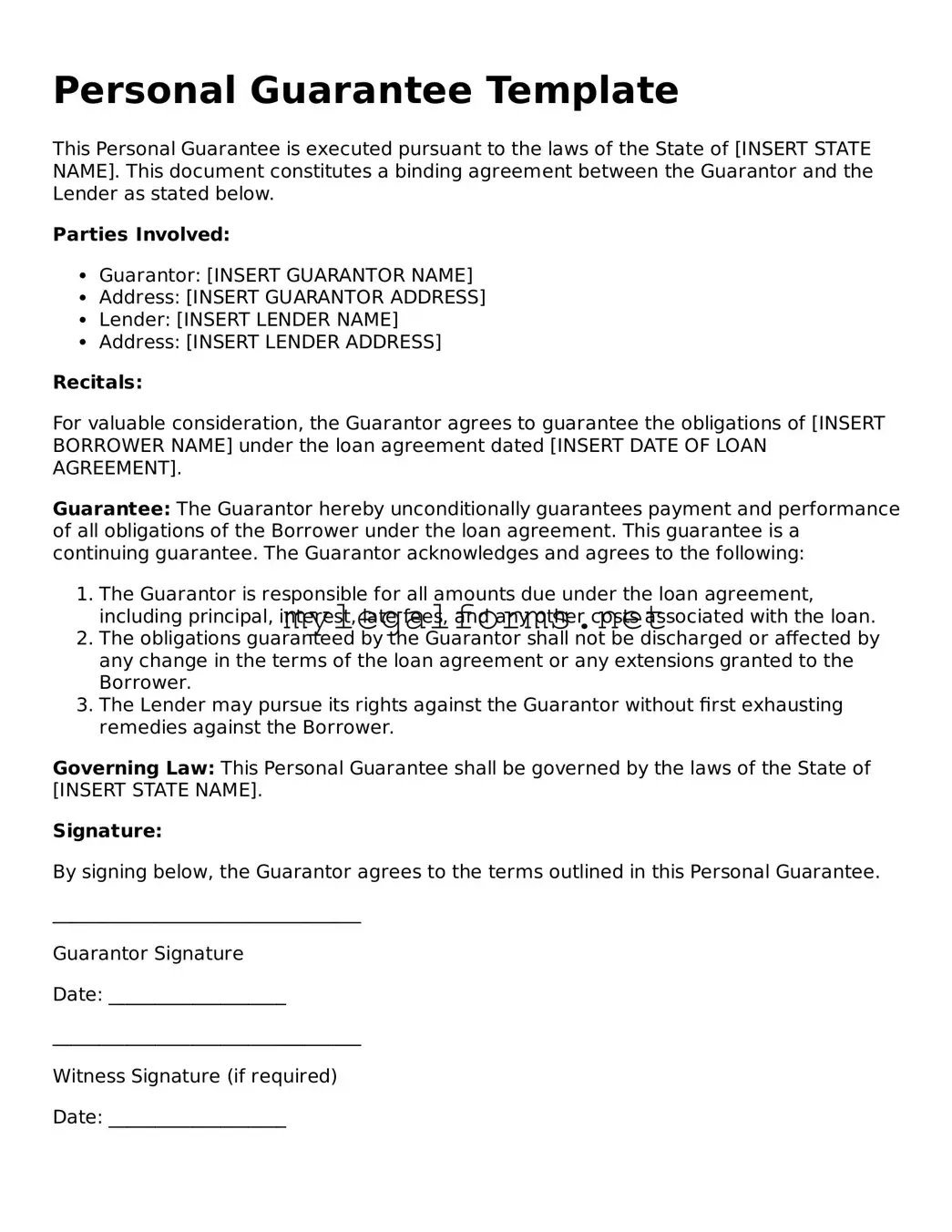Filling out a Personal Guarantee form is a crucial step for individuals seeking to secure loans or credit for their businesses. However, many people make common mistakes that can lead to complications down the line. Understanding these pitfalls can help ensure that the form is completed accurately and effectively.
One frequent mistake is not reading the entire form before filling it out. Individuals often rush through the process, missing important sections or requirements. This can lead to incomplete information, which may result in delays or even denials of credit.
Another common error is failing to provide accurate personal information. This includes names, addresses, and Social Security numbers. Inaccuracies can create confusion and may raise red flags for lenders, potentially jeopardizing the application.
People also tend to overlook the financial obligations section. This part of the form requires a clear disclosure of existing debts and liabilities. Omitting this information can lead to a lack of trust from lenders, who need a full picture of the applicant’s financial situation.
Many applicants neglect to review the terms and conditions associated with the guarantee. Understanding the implications of signing the form is vital. Failing to grasp these terms can result in unexpected consequences if the business defaults on its obligations.
Another mistake is not consulting with a financial advisor or legal professional. Many individuals attempt to navigate the complexities of the Personal Guarantee form on their own. Seeking expert advice can provide clarity and ensure that all necessary precautions are taken.
Some people forget to sign and date the form. This may seem trivial, but an unsigned form is not legally binding. This oversight can lead to the entire application being rejected, wasting time and resources.
Additionally, individuals often fail to keep copies of the completed form. Having a record of what was submitted can be essential for future reference, especially if questions arise later regarding the guarantee.
Another significant error is not providing supporting documentation. Lenders may require additional information to substantiate the claims made in the form. Failing to include this can result in delays or denials.
People sometimes underestimate the importance of disclosing any potential conflicts of interest. Transparency is key in financial dealings. Not mentioning any relationships or interests that could affect the guarantee can lead to serious legal repercussions.
Lastly, many applicants ignore the importance of clarity and professionalism in their writing. A well-organized and clearly written form reflects positively on the applicant. Sloppy handwriting or unclear explanations can create doubts about the applicant's reliability.
By avoiding these ten mistakes, individuals can enhance their chances of successfully completing the Personal Guarantee form and securing the necessary financial support for their business endeavors.
